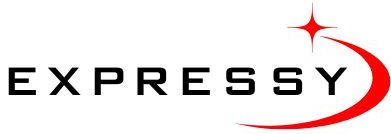Let’s face it: taxes can be confusing, especially when you’re dealing with something as everyday as paying or receiving rent. Whether you’re a landlord or a business renting office space, it’s essential to understand how the Indian tax law applies. That’s where Section 194I of the Income Tax Act steps in. This provision governs the Tax Deducted at Source (TDS) on rent payments. In this article, we’ll simplify this section so you can stay compliant without scratching your head.
What is Section 194I?
Section 194I is a provision in the Indian Income Tax Act that requires individuals and entities to deduct TDS on rent limit. It was introduced to ensure tax collection at the source for better compliance and to plug revenue leakage.
Who Needs to Deduct TDS under Section 194I?
Not everyone who pays rent has to deduct TDS. Here’s who is required to deduct it:
- Companies
- Firms
- Individuals and HUFs subject to tax audit in the preceding year
Exemptions include:
- Individuals and HUFs not under tax audit
- Those paying rent below the specified threshold
Applicability of TDS on Rent
Threshold Limits
As of now, TDS is applicable only if the annual rent exceeds ₹2,40,000 in a financial year. This applies per payee, not per property.
Types of Payments Covered
TDS under Section 194I applies to:
- Land
- Buildings (including factories)
- Machinery
- Equipment
- Furniture and fittings
So, whether you’re renting a shop, machinery, or even office furniture—TDS rules may apply.
What Qualifies as ‘Rent’?
According to the Act, rent includes payments under any lease, sub-lease, tenancy, or agreement for the use of any:
- Land
- Building
- Machinery
- Plant
- Equipment
- Furniture
Even if you call it a licensing fee or usage charge, it still counts as rent if it matches the above criteria.
Types of Properties Covered
Land & Building
If you’re renting an office space or apartment, that’s obviously rent.
Machinery & Equipment
Businesses renting generators or manufacturing equipment fall under this too.
Furniture and Fittings
Yes—even renting desks and chairs for your office means TDS applies if the threshold is breached.
Current TDS Rates Under Section 194I
The TDS rates vary based on the type of asset:
- 2% for rent of plant, machinery, or equipment
- 10% for rent of land, building, or furniture/fittings
Latest Updates on TDS Rates
During the COVID-19 pandemic, the rates were temporarily reduced as a relief measure. For FY 2023–24, standard rates resumed unless further reliefs are announced in future Budgets.
When is TDS Deducted and Deposited?
Time of Deduction
TDS must be deducted at the time of credit of rent or actual payment, whichever is earlier.
Due Date for Deposit
- For non-government deductors: 7th of the following month
- For March: 30th April is the due date
Consequences of Late Deduction or Deposit
Missing deadlines can be expensive:
- Interest under Section 201A
- Late filing fees under Section 234E
- Penalty under Section 271H
And yes, you can be treated as an assessee-in-default!
TDS Return Filing Requirements
To report the TDS deducted:
- File Form 26Q on a quarterly basis
- You must quote PAN of the deductee
- Upload to the TIN portal
TDS Certificate (Form 16A)
- Issue within 15 days of filing return
- It’s like a receipt for the deductee—they can use it for filing ITR
Exemptions Under Section 194I
- Rent paid to government entities
- Individuals or HUFs who are not under tax audit
- Payments below ₹2,40,000 per annum per payee
Difference Between Section 194I and 194IB/194IC
| Section | Applicability | Threshold | Who Deducts |
| 194I | Businesses/audited individuals | ₹2.4L | Audited persons |
| 194IB | Individuals/HUFs not under audit | ₹50,000/month | Tenants |
| 194IC | Joint development agreements | No limit | Developers |
Common Mistakes While Applying Section 194I
- Using wrong TDS rates
- Not checking PAN of landlord
- Missing due dates
- Confusing Section 194I with 194IB
How to Ensure Compliance
- Keep a record of rent agreements
- Use TDS calculators
- Consult a chartered accountant
- Automate with TDS software
Real-Life Scenarios
Case 1: Company Renting Office Space
ABC Pvt. Ltd. rents an office for ₹50,000/month. Since the annual rent is ₹6,00,000, they must deduct 10% TDS monthly.
Case 2: Renting Machinery
XYZ Ltd. rents generators worth ₹3,00,000/year. They need to deduct TDS @ 2%.
Conclusion
Section 194I might sound complicated, but once you break it down, it’s just about being timely and accurate with your rent payments and TDS deductions. Whether you’re the payer or receiver of rent, knowing your responsibilities under this section saves you from future tax troubles. Stay informed, stay compliant!












